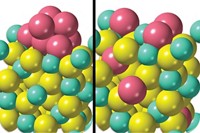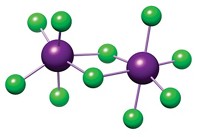Advertisement
Grab your lab coat. Let's get started
Welcome!
Welcome!
Create an account below to get 6 C&EN articles per month, receive newsletters and more - all free.
It seems this is your first time logging in online. Please enter the following information to continue.
As an ACS member you automatically get access to this site. All we need is few more details to create your reading experience.
Not you? Sign in with a different account.
Not you? Sign in with a different account.
ERROR 1
ERROR 1
ERROR 2
ERROR 2
ERROR 2
ERROR 2
ERROR 2
Password and Confirm password must match.
If you have an ACS member number, please enter it here so we can link this account to your membership. (optional)
ERROR 2
ACS values your privacy. By submitting your information, you are gaining access to C&EN and subscribing to our weekly newsletter. We use the information you provide to make your reading experience better, and we will never sell your data to third party members.
Energy
Adding a catalytic membrane to lithium-air batteries improves performance
Preventing buildup of harmful products boosts battery efficiency and lifetime
by Mitch Jacoby
July 25, 2016
| A version of this story appeared in
Volume 94, Issue 30

If lithium-air batteries lived up to their theoretical potential, they could provide roughly 10 times as much energy per weight as lithium-ion batteries. That level of performance could speed adoption of electric vehicles. But the air-breathing power sources fare poorly in the real world: They suffer from sluggish kinetics and short lifetimes.
To address those issues, researchers have modified the standard lithium-air battery design by including a catalytic membrane adjacent to the electrode at which oxygen from the air reacts (Nano Lett. 2016, DOI: 10.1021/acs.nanolett.6b00856). That design extends battery lifetime by improving reversibility of the electrochemical reactions and it boosts the efficiency of the battery’s power generation. The new design also provides a way to analyze products formed during battery charging cycles to better understand the underlying electrochemistry.
A key problem impeding lithium-air batteries is the formation of lithium oxides such as Li2O2 on the air-breathing electrode (cathode) during discharge. These solids accumulate on the cathode surface and bury catalytic sites needed to reverse oxide formation.
Won-Hee Ryu and André D. Taylor of Yale University and colleagues proposed that moving the catalyst away from the cathode surface may protect the catalyst and improve battery performance. So they decorated a porous aluminum oxide membrane with catalytic palladium particles and positioned the membrane near the cathode.
When the team examined the membranes afterward, they found that lithium oxides had formed on the catalytic membrane but did not bury the catalyst particles. The particles remained accessible during charging to decompose the lithium oxides, reversing the electrochemical reaction.




Join the conversation
Contact the reporter
Submit a Letter to the Editor for publication
Engage with us on Twitter